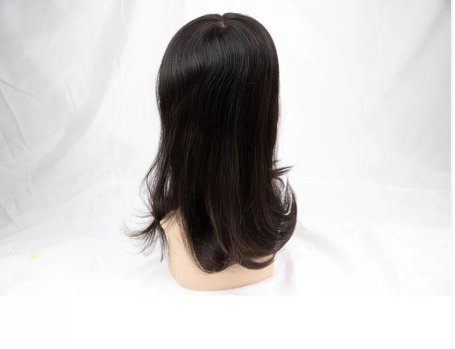
Wigs. They sit on heads around the world today, changing looks in an instant. But where did they come from? Who dreamed them up? Dive into the history of wigs, and you'll find tales of sun protection, power, and style. No single person created wigs, but their story spans thousands of years. Let's trace it back. You'll see how these hair pieces evolved from simple covers to fashion statements. Ready?
Wigs didn't start as fancy accessories. They solved real problems. Think heat, bugs, or status.
Ancient Egyptians get credit for the first wigs. Around 3400 BC, they shaved heads to beat the desert sun and avoid lice. Bald? Not a look for the elite. So they crafted wigs from human hair, wool, or palm fibers. These weren't plain. Beeswax and resin held them stiff. Royalty wore elaborate ones with gold threads.
Pharaohs like Tutankhamun sported them. Women too. Wigs showed wealth. Poor folks used cheaper materials. Dig a tomb, find wigs buried with mummies. They believed in afterlife style.
Materials: Human hair for the rich; plant fibers for others.
Purpose: Hygiene first, then beauty.
Fun fact: Cleopatra? She rocked wigs dyed black with henna.
Short sentence: Egypt led the way.
Wigs spread fast. Assyrians and Persians adopted them by 1000 BC. Warriors used them under helmets. Greeks and Romans joined in. Roman women dyed wigs blonde from captured slaves' hair. Emperors like Julius Caesar hid baldness with them.
In Asia, Chinese and Japanese used wigs for theater. Actors switched roles quick.
Africa had its own traditions. Tribes wove hair into elaborate designs for ceremonies.
Wigs weren't just hair. They told stories of power and identity.
Culture | Time Period | Main Use |
Egyptian | 3400 BC | Sun protection, status |
Roman | 100 BC | Fashion, hide baldness |
Assyrian | 1000 BC | Military comfort |
Chinese | 500 BC | Theater performances |
Wigs in Europe: Royalty and Revolution
Europe caught wig fever later. Blame kings and courts.
By the 1500s, wigs hit Europe. Queen Elizabeth I of England wore red ones to cover gray hair. Syphilis caused baldness back then. Wigs hid it. French King Louis XIII went bald young. He started the trend in 1624. His court followed. Soon, all nobles wore them.
Wigs grew big. Literally. Layers of curls piled high. Perfumed to mask smells—no daily baths yet.
Enter the 1700s. Powdered wigs ruled. Why powder? Starch or flour hid grease and lice. White powder made them look clean. Judges and lawyers still wear them in some places.
Louis XIV, the Sun King, had over 1,000 wigs. Each cost a fortune. Craftsmen called perruquiers made them. Horsehair for cheap ones; human hair for fancy.
But trends shift. French Revolution in 1789 mocked wigs as elite symbols. Chop! Off with the heads—and the wigs. By 1800, natural hair returned.
Short: Powdered wigs screamed status. Then they fell.
Wigs took a break. Then boomed again.
Victorians used wigs for elaborate updos. World Wars brought shortages. Synthetic fibers changed everything in the 1950s. Cheaper, easier to style.
Hollywood stars like Marilyn Monroe wore them. Drag queens elevated them to art. 1960s mods rocked bold colors.
Medical needs grew. Cancer patients needed natural-looking options. Wigs became lifelines.
Now? Wigs for everyone. Lace fronts look real. Heat-friendly synthetics curl like human hair.
Celebrities switch styles daily. Beyoncé, Lady Gaga—they make wigs cool.
Stats: Global wig market hits $10 billion. Why? Hair loss affects millions. Plus, fun.
Types: Lace wigs, full caps, extensions.
Materials: Synthetic for budget; human for luxury.
Trends: Eco-friendly options from plant fibers.
Wigs empower. Change your look? Easy.

No one "invented" wigs. They evolved. Earliest evidence: Egypt, 3400 BC. A female burial in Hierakonpolis had one.
Some say Persians or Assyrians. But Egypt wins for oldest finds.
Short answer: Ancients did, solving everyday problems.
Deep dive: Wigs reflect society. Protection first, then vanity.
Speaking of quality wigs today, meet Qingdao Eminent Hair Products Co., LTD. Based in Qingdao, China, they've crafted hair pieces for years. Men's toupees, women's wigs, extensions—they do it all. Using Indian, Chinese, Mongolian, or European hair. Remy or virgin. Custom or stock. Around 50 factory workers and 500 knotters ensure top-notch work. Fast turnaround: 6-8 weeks standard, rush in 4-5. Natural looks, any color, length. They're pros in base designs like silk tops or PE lines. If you're hunting reliable suppliers, Eminent delivers.
The history of wigs weaves through time. From Egyptian sun shields to European court flair, and now everyday style. No single creator—just human ingenuity. Wigs boost confidence, hide flaws, spark creativity. Understanding their past? It enriches how we wear them today. Explore. Experiment. Your next wig could channel ancient royalty.
The history of wigs starts in ancient Egypt around 3400 BC. They used them for protection and status.
No one person created wigs. Ancient Egyptians get credit for the first ones, evolving from practical needs.
In Europe, the history of wigs took off with kings like Louis XIII in the 1600s, hiding baldness and showing power.
Knowing who created wigs—or rather, how they started—helps appreciate modern versions. It shows wigs as timeless tools for self-expression.
Check museums or books on ancient fashion. Online, sites like Wikipedia or hair blogs dive deep into the history of wigs.
The quality of the products is the foundation of our existence!Customers'satisfaction is our permanent commitment!